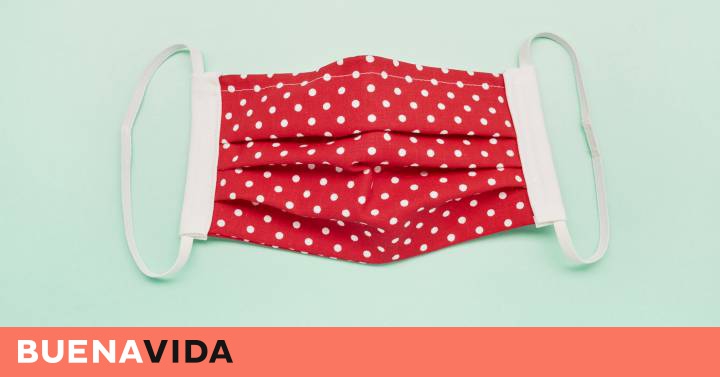When the debate about whether the use of masks should be generalized is still unresolved, the idea that in the current context, it will always be better to wear a suit than to expose your face: although surgical masks do not prevent those who wear them They carry the new coronavirus, are an obstacle to the transmission of SARS-CoV-2 from infected, but asymptomatic people to the rest of the population. And, as the shortage of approved products makes buying them an unfeasible option at the moment, there are already those who are darning their own protection. It is not an eccentricity; The United States Centers for Disease Control (CDC) has released instructions for making a mask at home. What is not so clear is the type of fabric that should be used for maximum effectiveness.
MORE INFORMATION
- Instructions for making a mask at home
"There is no scientific evidence," says spokeswoman for the Spanish Society of Public Health and Health Administration (SESPAS) Andrea Burón, "but there are materials that seem to work better." And he cites a 2013 work that compares the effectiveness of homemade masks made with nine common tissues with that of surgical ones. The study was carried out with influenza pandemics in mind, but "the coronavirus is similar in size to the virus that causes the disease," so Burón admits it as a valid reference as long as there is no new research. According to the results of the work, those used in vacuum cleaner bags and kitchen cloths are the fabrics that have the greatest efficiency in filtering the air, while linen and silk are the least protective. But Burón does not point to either of the two most efficient materials, and he opts for cotton as the probably ideal fabric (while stressing that the effectiveness of these masks is not total, which only exists if their use is combined with measures of Social isolation). Why?
Because the ability of a material to filter air is not the only characteristic that must be taken into account when manufacturing a mask. The doctor, a specialist in preventive medicine and public health, emphasizes that the interaction with the face is also decisive. "If the material is rather stiff, the extra protection effect may be diminished because it leaves more space between the skin and the mask," he explains. Cotton not only conforms well to the shape of the face, but also does not usually cause skin problems. And since effectiveness increases with thickness, it can always be reinforced by folding the fabric into several layers: Burón stresses that homemade masks should have at least two or three. Again, if putting on these layers causes the mask to deform and the fabric to separate from the face, it may be preferable to opt for another fabric.
On the other hand, and obviously, a mask must allow adequate breathing. Vacuum cleaner bags and dishcloths did not do well enough in the reference study. "We found that the pillowcase [600 threads per square inch] and a 100% cotton T-shirt were the most suitable household materials for improvising a mask," says the article, published in the journal Disaster Medicine and Public Health Preparedness . And that, after silk and linen, the pillowcase was the least efficient material in blocking the passage of hypothetical viruses.
How to choose the right fabric for lighting
Both the SESPAS spokesperson and the CDC point to a 100% cotton shirt as a first option, although Burón warns that if it is too worn it may not protect enough. It is best to opt for the least used, and wash them before cutting the fabric. In case of doubt between various fabrics, it is advisable to do a simple test that gives you an idea of how porous a material is. "You put yourself against the window or in front of a light source like a bulb, and you look at how much light you let in. The less the better."
The specialist does not rule out that using elements other than cotton in an inner layer of the mask may have benefits, fabrics such as flannel or other more rigid ones, located in the central area of the mask, where it would not modify its contour. In fact, the CDC offers a mask modality that is seamless and incorporates a coffee filter only in this part of the design.
As for the way to wash the masks, the doctor believes that putting them in the washing machine at 60 degrees with a normal detergent should be enough. Taking into account the confinement situation and the fact that several masks can be removed from a T-shirt, the ideal would be to wash it after each use, especially if it has been moistened, since viruses have been found to move more easily in wet tissues.
Of course, keep in mind that if you choose a fabric that shrinks in the washing machine, the mask may lose its shape and, with it, its effectiveness. And we must never forget that said effectiveness is relative; The specialist warns that homemade masks are a last resort solution, that they only have some efficacy if social distancing measures are strictly adhered to and that one can be deceived by a false sense of security that must be avoided at all Costa: "When there is no other choice but to get closer to others they can help, but it is not necessary to think that you can meet friends or spend a lot of time talking with other people to carry it."
You can follow Buenavida on Facebook, Twitter, Instagram or subscribe here to the Newsletter.










/cloudfront-eu-central-1.images.arcpublishing.com/prisa/KMEYMJKESBAZBE4MRBAM4TGHIQ.jpg)



